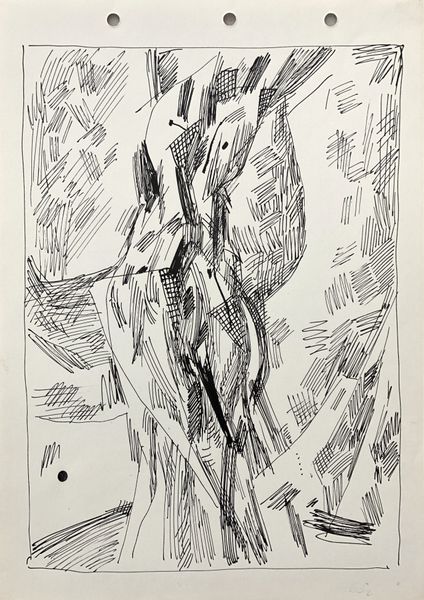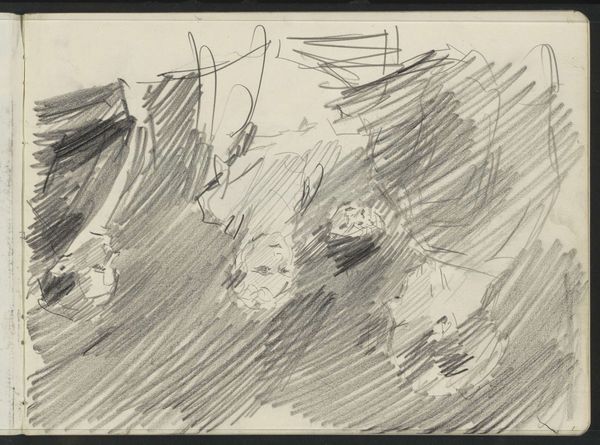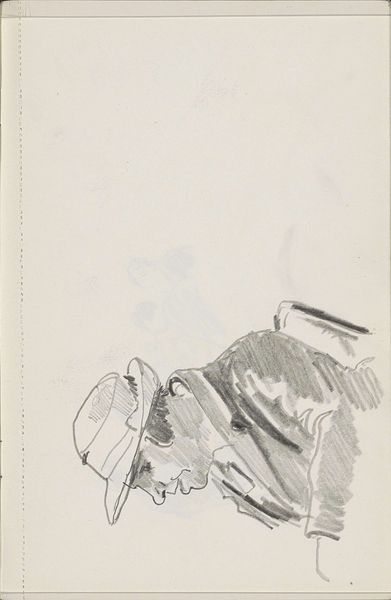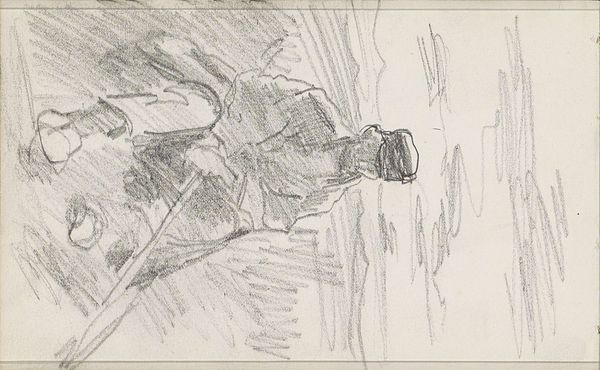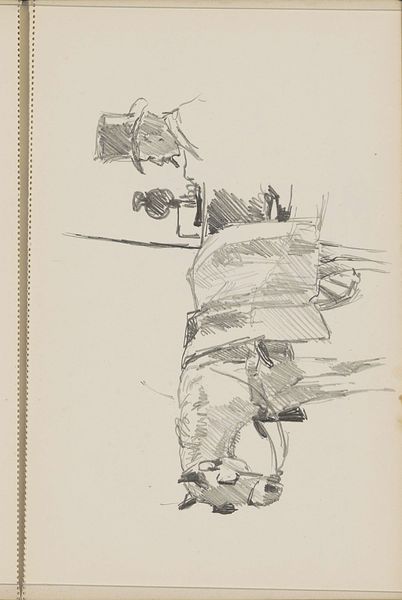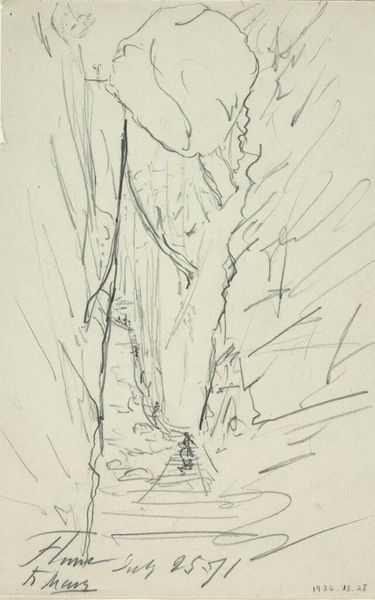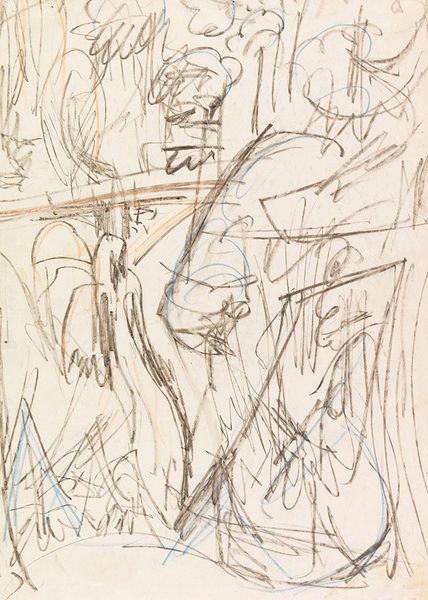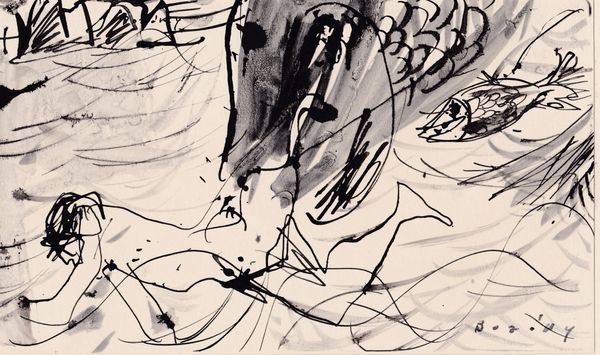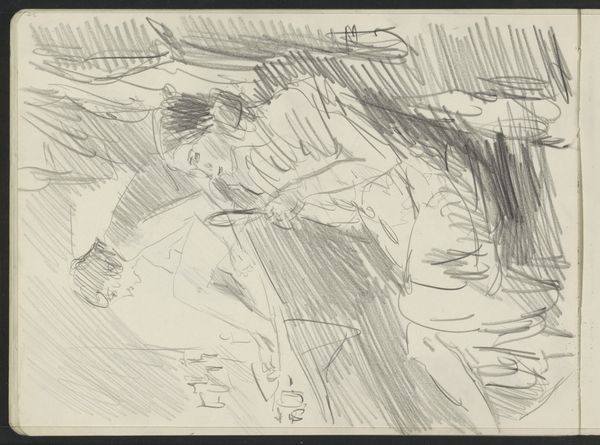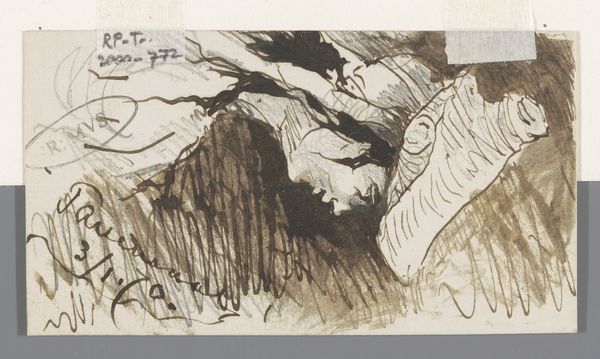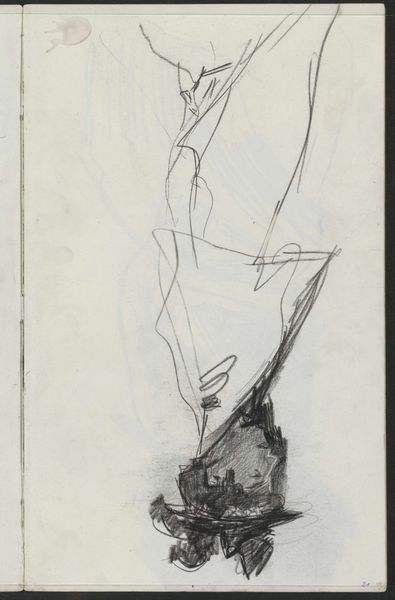
Dimensions: image: 256 x 156 mm
Copyright: © Frink Estate | CC-BY-NC-ND 4.0 DEED, Photo: Tate
Editor: Here we have Dame Elisabeth Frink's "The Great Bow," from the Tate Collection. The archer's posture feels both powerful and vulnerable. What historical context might inform our understanding of this image? Curator: Frink created many male figures which challenge heroic masculinity, particularly in the post-war era. Consider the social expectation of men returning from war – were they celebrated or haunted? Editor: So, the archer could be a symbol of strength, but also of the burden of expectation? Curator: Exactly. Frink frequently explored the tension between the idealized male form and the realities of violence and trauma prevalent during the 20th century. What do you think? Editor: I see it now – the crowd behind him could represent societal pressure. It gives the piece a different layer of meaning. Curator: Indeed, and Frink's work often invites us to consider the public role of art in reflecting and questioning these pressures. Editor: Thanks! It’s fascinating to think about how social context shapes our interpretation.
